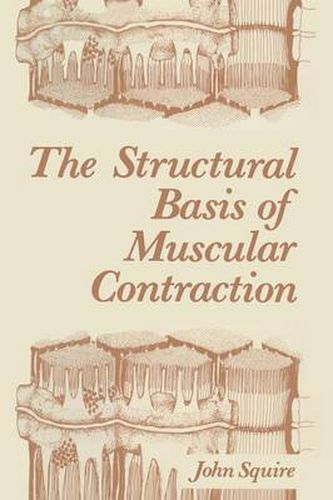Readings Newsletter
Become a Readings Member to make your shopping experience even easier.
Sign in or sign up for free!
You’re not far away from qualifying for FREE standard shipping within Australia
You’ve qualified for FREE standard shipping within Australia
The cart is loading…






This title is printed to order. This book may have been self-published. If so, we cannot guarantee the quality of the content. In the main most books will have gone through the editing process however some may not. We therefore suggest that you be aware of this before ordering this book. If in doubt check either the author or publisher’s details as we are unable to accept any returns unless they are faulty. Please contact us if you have any questions.
Muscular contraction provides one of the most fascinating topics for a biophysicist to study. Although muscle comprises a molecular machine whereby chemical energy is converted to mechanical work, its action in producing force is something that is readily observable in everyday life, a feature that does not apply to most other structures of biophysical inter est. In addition, muscle is so beautifully organized at the microscopic level that those important structural probes, electron microscopy (with the associated image analysis methods) and X-ray diffraction, have pro vided a wealth of information about the arrangements of the constituent proteins in a variety of muscle types. But, despite all this, the answer to the question How does muscle work? is still uncertain, especially with regard to the molecular events by which force is actually generated, and the question remains one of the major unsolved problems in biology. With this problem in mind, this book has been written to collect together the available evidence on the structures of the muscle fila ments and on their arrangements in different muscle cells, to extract the common structural features of these cells, and thus to attempt to define a possible series of mechanical steps that will describe at molecular resolu tion the process by which force is generated. The book cannot be considered to be an introductory text; in fact, it presents a very detailed account of muscle structure as gleaned mainly from electron microscopy and X-ray diffraction.
$9.00 standard shipping within Australia
FREE standard shipping within Australia for orders over $100.00
Express & International shipping calculated at checkout
This title is printed to order. This book may have been self-published. If so, we cannot guarantee the quality of the content. In the main most books will have gone through the editing process however some may not. We therefore suggest that you be aware of this before ordering this book. If in doubt check either the author or publisher’s details as we are unable to accept any returns unless they are faulty. Please contact us if you have any questions.
Muscular contraction provides one of the most fascinating topics for a biophysicist to study. Although muscle comprises a molecular machine whereby chemical energy is converted to mechanical work, its action in producing force is something that is readily observable in everyday life, a feature that does not apply to most other structures of biophysical inter est. In addition, muscle is so beautifully organized at the microscopic level that those important structural probes, electron microscopy (with the associated image analysis methods) and X-ray diffraction, have pro vided a wealth of information about the arrangements of the constituent proteins in a variety of muscle types. But, despite all this, the answer to the question How does muscle work? is still uncertain, especially with regard to the molecular events by which force is actually generated, and the question remains one of the major unsolved problems in biology. With this problem in mind, this book has been written to collect together the available evidence on the structures of the muscle fila ments and on their arrangements in different muscle cells, to extract the common structural features of these cells, and thus to attempt to define a possible series of mechanical steps that will describe at molecular resolu tion the process by which force is generated. The book cannot be considered to be an introductory text; in fact, it presents a very detailed account of muscle structure as gleaned mainly from electron microscopy and X-ray diffraction.